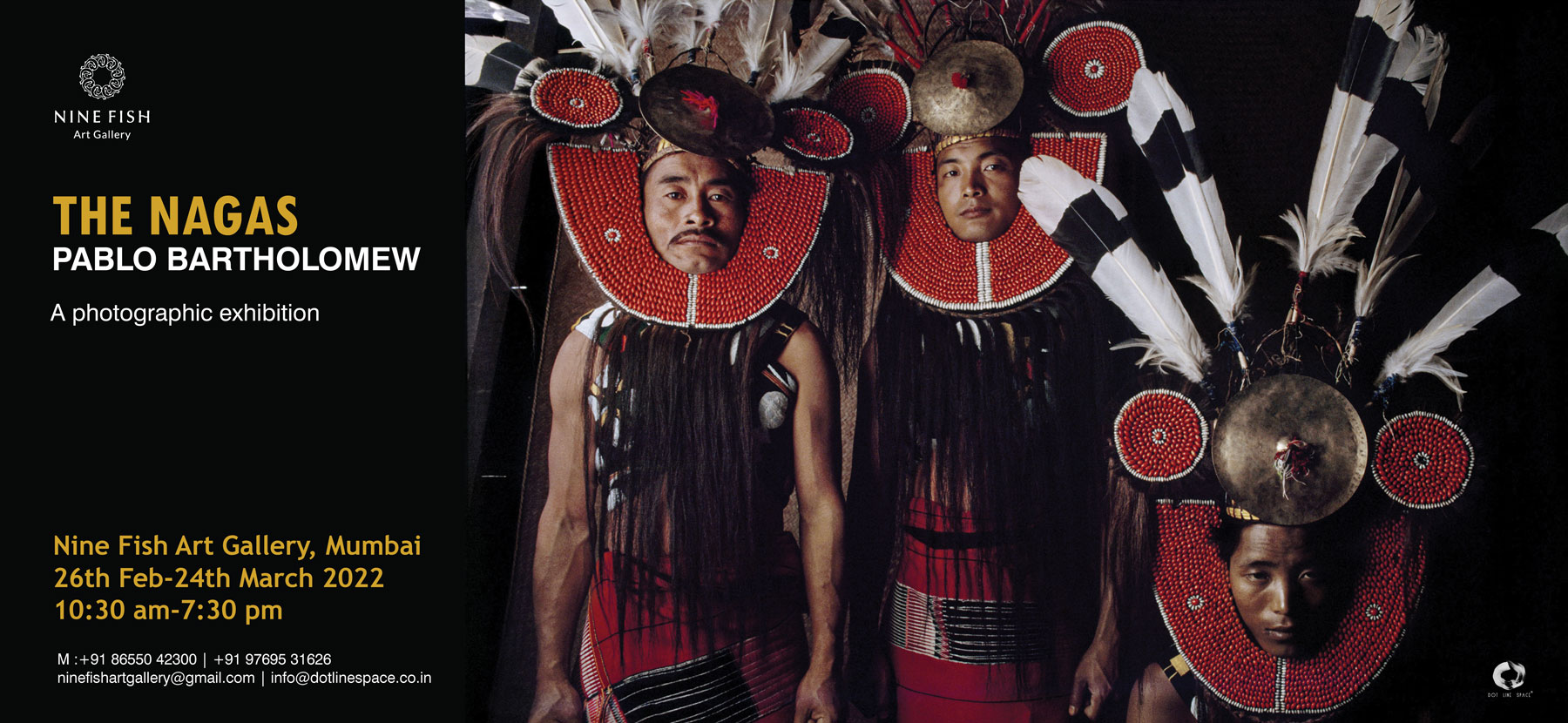The Naga project emerged from the many stories of the Naga tribes recounted by the photographer’s father, Richard Bartholomew, who fled persecution by the invading Japanese forces in his native Burma [present day Myanmar] to enter India. Along the escape route, he encountered the Nagas and carried the stories of their hospitality and kindness into his new life in India. This planted a seed of great curiosity in his son’s mind and in 1989, Pablo Bartholomew set out to the lands afar, in his customized 4 wheeler, to explore the geography and its people.
Photographing Naga tribes for over ten years despite the dangers posed by low-level warfare between the Indian army and secessionist groups, Bartholomew drove through the Naga areas of Assam, Arunachal Pradesh, Manipur, and Nagaland, in his rugged jeep that performed several functions beyond being just a vehicle–portable photo studio, carrier of lighting equipment and a generator. Bartholomew describes his multiple trips as “an escape… where phones didn’t work, there were no faxes, just hill tribes and people from the valleys” and termed his project a visual anthropological project.
Nagas is a term used to describe the over-thirty tribes that live along the Patkai mountain range which spills over several geographical boundaries. They are a proud people who continue to hold their own constitution, flag and identity. Within that Naga identity are several diverse indigenous tribes that have over sixty spoken dialects. This essentially brings several cultures together, similar in traits but each tribe distinct; so much so that every tribe could virtually be a nation unto itself.
Several traditions–past and present–are unique to the Naga people. One of them is the tradition of Headhunting which, though banned by the British, symbolised a certain martial power and virility, and continues to stand central to all Naga tribes. Similarly, many animistic traditions of the Nagas are intrinsic to the ways of being and are thus, essential to what makes them a proud people.
In the 1800’s Baptist missionaries penetrated these tribal lands, eventually converting the population to Christianity. Through the past 150 years, an interesting confluence has emerged that is embedded in modernity and also, in traditions making this project a robust exploration and a curious re-visitation of the Naga People and their lands from 1989 to 1999.

